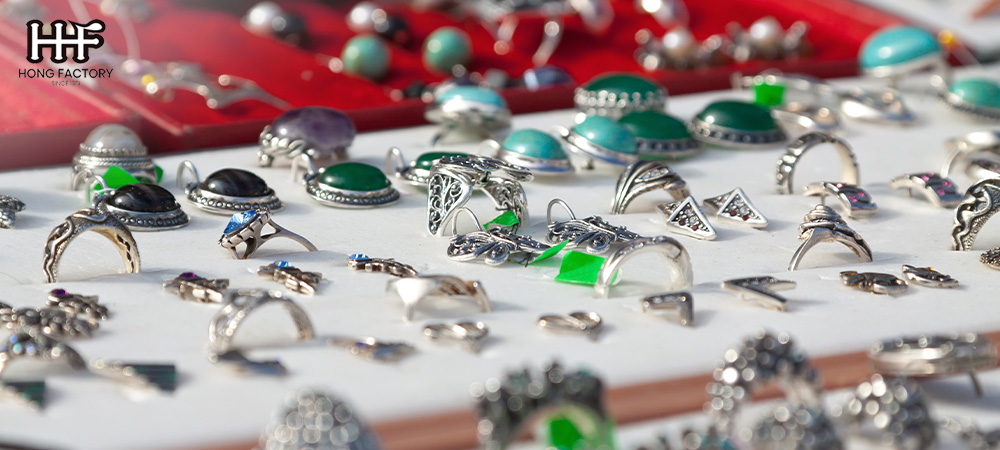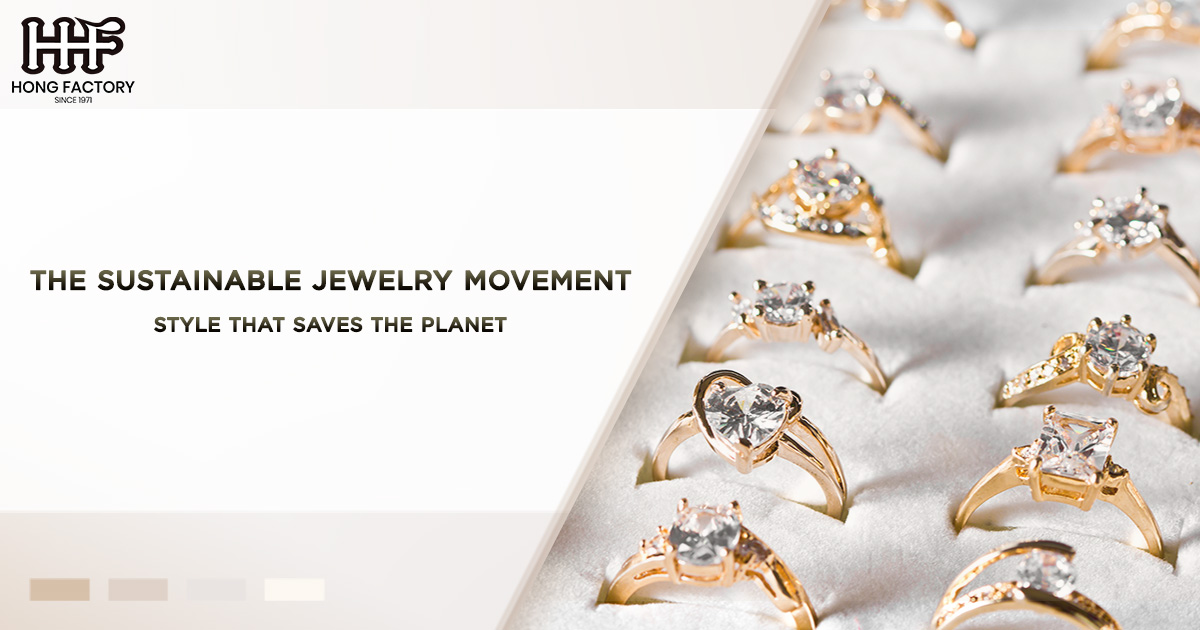In today’s world, sustainability is no longer a buzzword—it’s a necessity. With industries across the globe adjusting their practices to reduce environmental impact, the jewelry industry is no exception. As consumers become more conscious about the products they buy, designers and brands are embracing the sustainable jewelry movement. This shift isn’t just about aesthetics; it’s about creating pieces that are both beautiful and eco-friendly.
The Rise of Sustainable Jewelry
the sustainable jewelry movement is gaining momentum as more people recognize the environmental and ethical issues associated with traditional jewelry production. From mining practices that harm ecosystems to unethical labor conditions, the conventional jewelry industry has left a significant carbon footprint. However, a new wave of designers is challenging the status quo by prioritizing eco-conscious materials and ethical production methods.
The movement is driven by a growing desire to minimize harm to the planet while still indulging in the beauty and artistry of fine jewelry. Sustainable jewelry focuses on transparency, accountability, and responsible sourcing, making it an attractive option for consumers who want their purchases to align with their values.
Current Trends in Sustainable Jewelry Production
There are several key trends that are shaping the sustainable jewelry industry today, each of which plays a crucial role in reducing the environmental impact of jewelry production. Let’s take a look at some of the most significant trends that are helping designers and consumers alike make more ethical choices.
1. Recycled Metals
One of the most popular trends in sustainable jewelry production is the use of recycled metals. Mining for precious metals like gold, silver, and platinum can be incredibly destructive to the environment, leading to deforestation, habitat destruction, and pollution. Additionally, the extraction process often involves harmful chemicals such as cyanide and mercury.
To combat these issues, sustainable jewelry brands are turning to recycled metals, which are sourced from previously used materials such as old jewelry, electronics, and industrial byproducts. By using recycled metals, designers are able to reduce the demand for new mining operations and the associated environmental harm. This approach not only conserves natural resources but also cuts down on energy consumption, as recycling metals requires less energy than mining new ones.
2. Ethical Sourcing of Gemstones
Another major trend in the sustainable jewelry movement is the ethical sourcing of gemstones. Traditional gemstone mining can be fraught with issues, including poor working conditions, child labor, and environmental degradation. To address these concerns, many jewelry brands are committing to sourcing gemstones from mines that prioritize fair labor practices and environmental preservation.
Ethically sourced gemstones come from mines that adhere to strict guidelines regarding worker safety, fair wages, and sustainable land use. Some brands are even opting for lab-grown gemstones, which offer the brilliance and beauty of natural stones without the ecological impacts of mining. These lab-grown gems are created using advanced technology that mimics the natural formation process, resulting in stones that are chemically identical to their mined counterparts but produced in a more environmentally friendly way.
3. Fair Trade and Transparent Supply Chains
Consumers today want to know where their products come from, and that includes the jewelry they wear. As a result, a growing number of jewelers are focusing on transparent supply chains and Fair Trade certifications. Fair Trade ensures that workers in developing countries are paid fair wages and work in safe conditions, while also promoting sustainable practices that protect the environment.
In the jewelry industry, Fair Trade practices extend to both metal sourcing and gemstone mining. Brands that adhere to Fair Trade principles often work closely with small-scale mining communities, ensuring that they benefit from the global jewelry market while minimizing environmental damage. Transparency is key in this movement, with many brands providing detailed information about the origins of their materials and the ethical standards they follow.
4. Minimalist and Timeless Designs
Sustainability in fashion isn’t just about the materials used—it’s also about design. Fast fashion, which encourages the rapid turnover of trends, is a major contributor to environmental waste. In response, sustainable jewelry brands are embracing minimalist and timeless designs that transcend fleeting trends.
By creating pieces that are designed to last for years, rather than just a season, sustainable jewelry brands are encouraging consumers to invest in quality over quantity. These designs often feature clean lines, simple shapes, and versatile styles that can be worn for any occasion. The idea is to create pieces that will remain in style for years to come, reducing the need for constant consumption and waste.
5. Eco-Friendly Packaging
The movement toward sustainability extends beyond the jewelry itself to include eco-friendly packaging. Traditional jewelry packaging often involves plastic, foam, and other non-recyclable materials that contribute to pollution. To address this issue, many brands are opting for sustainable packaging solutions such as recycled paper, biodegradable materials, and reusable pouches.
Eco-friendly packaging not only reduces waste but also reinforces a brand’s commitment to sustainability. It’s a small but impactful way for jewelry companies to show their dedication to reducing their environmental footprint.

Why Sustainable Jewelry Matters
The sustainable jewelry movement is about more than just reducing environmental harm—it’s about creating a more ethical and responsible industry. Here are a few reasons why sustainable jewelry matters
- Environmental Impact – Traditional jewelry production, especially mining, has devastating consequences for the environment. By using recycled metals, ethically sourced gemstones, and eco-friendly practices, sustainable jewelry significantly reduces its ecological footprint.
- Ethical Labor Practices – Many workers in the jewelry industry, particularly in developing countries, are subjected to poor working conditions and unfair wages. Sustainable jewelry brands are committed to ensuring that workers are treated fairly and that their rights are protected.
- Consumer Awareness – As consumers become more aware of the impact their purchases have on the world, they’re increasingly seeking out products that align with their values. Sustainable jewelry allows consumers to make purchases they can feel good about, knowing that their money is supporting ethical and eco-friendly practices.
How to Choose Sustainable Jewelry
If you’re interested in supporting the sustainable jewelry movement, here are a few tips to help you make more eco-conscious choices
1. Look for recycled metals – Choose jewelry made from recycled gold, silver, or platinum to reduce the demand for new mining operations.
2. Ask about ethical sourcing – When buying gemstone jewelry, ask about the source of the stones and whether they were ethically mined.
3. Consider lab-grown gemstones – Lab-grown diamonds and other gemstones are an excellent alternative to mined stones, offering the same beauty without the environmental impact.
4. Support brands with transparent supply chains – Look for brands that are transparent about where their materials come from and how their jewelry is made.
5. Opt for timeless designs – Invest in pieces that are designed to last, rather than trendy jewelry that will go out of style quickly.
Conclusion
The sustainable jewelry movement represents a significant step forward for the industry, offering a way for consumers to enjoy beautiful, high-quality jewelry without compromising their values. By prioritizing recycled metals, ethical sourcing, fair labor practices, and eco-friendly packaging, sustainable jewelry brands are proving that style and sustainability can go hand in hand.
As the demand for eco-friendly products continues to grow, the jewelry industry will undoubtedly see even more innovation in the years to come. Whether you’re looking for an engagement ring, a statement necklace, or a pair of earrings, sustainable jewelry offers a way to express your style while making a positive impact on the planet.
